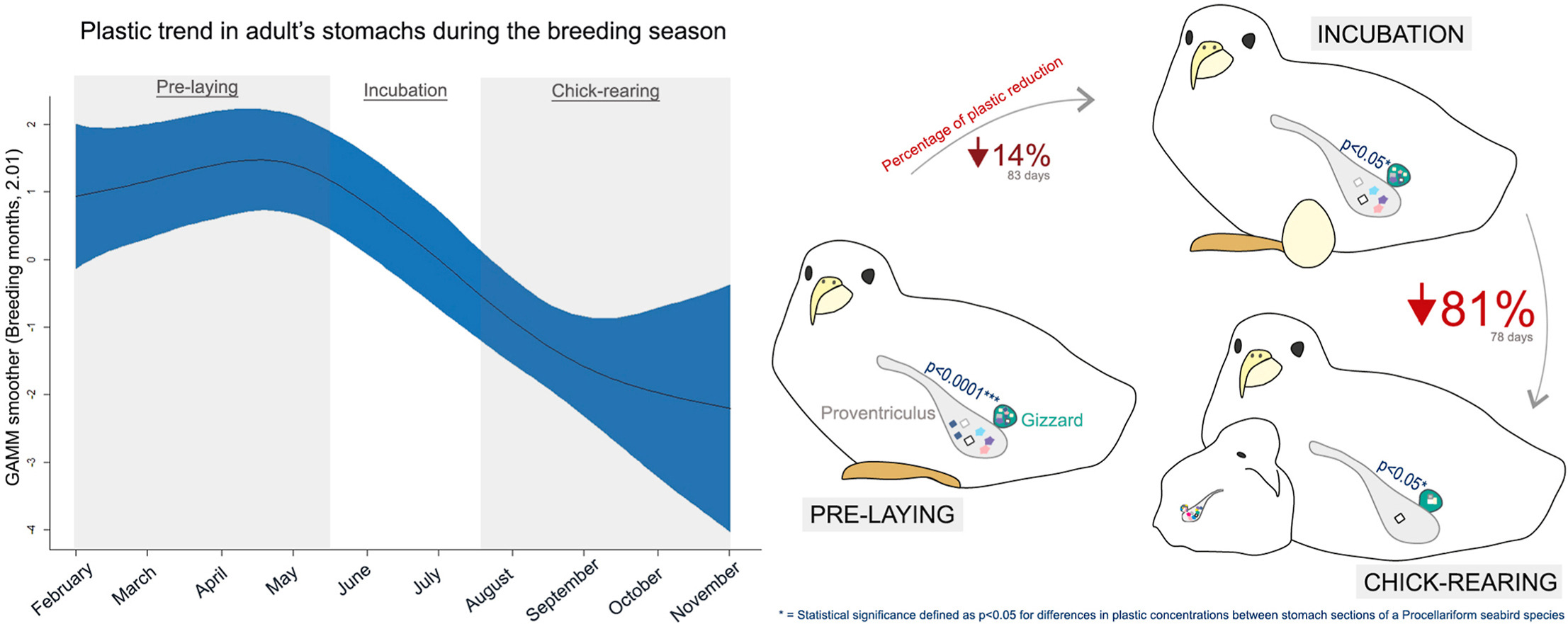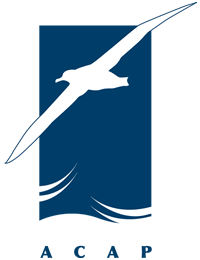
Graphical abstract from the publication
Yasmina Rodríguez (Instituto de Investigação em Ciências do Mar, Universidade dos Açores, Horta, Portugal) and colleagues have published open access in the journal Marine Environmental Research on plastic ingestion by Cory/s Shearwaters Calonectris borealis. They show that breeding birds “clear out” >80% of their ingested plastics by regurgitating them to their chicks.
The paper’s abstract follows:
“Plastic ingestion has been extensively studied in seabirds. However, knowledge gaps remain in understanding how plastic loads behave over time and their residence inside Procellariforms. This study investigated the temporal dynamics of ingested plastics by adult Cory's shearwaters (Calonectris borealis) during the breeding season to shed light on plastic retention times. We analysed the plastic content in the stomachs of 96 adults collected from 2015 to 2022 in the Azores archipelago (NE Atlantic) across distinct nesting periods: pre-laying, incubation, and chick-rearing. Our results revealed a general decrease in plastic loads over the breeding season, resulting in a marked reduction in the number of plastics before the winter pelagic phase. We found that plastic contents in breeders are mainly influenced by the intergenerational transfer of this contaminant to the offspring, indicating that progenitors highly reduce the concentrations of plastics from the stomachs (>80%) during the chick-rearing period. Understanding temporal patterns and retention time of plastic litter in seabirds is crucial for using them as indicators, with our results supporting fledglings of the studied species as the preferable age for fulfilling such a role in the breeding areas. Cory's shearwater breeders may contain plastics from their far-away wintering foraging grounds at the beginning of the breeding season, which would reflect plastics ingested in their transoceanic migrations or wintering regions beyond their breeding colonies. Moreover, they reset their plastic loads when nesting leading to underestimations if they are used as sentinels of plastic contamination during or after chick-rearing”.
Reference:
Rodríguez, Y., Rodríguez, A., Pereira, J.M. & Pham, C.K. 2025. Plastics reset in an adult Procellariform seabird species during the breeding season. Marine Environmental Research 204. 106939.
John Cooper, Emeritus Information Officer, Agreement on the Conservation of Albatrosses and Petrels, 25 February 2025

 English
English  Français
Français  Español
Español